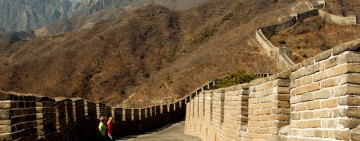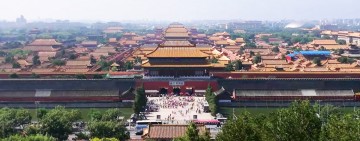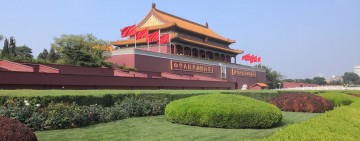The Top 20 Attractions in China: Part Two
Last updated on 2019-04-20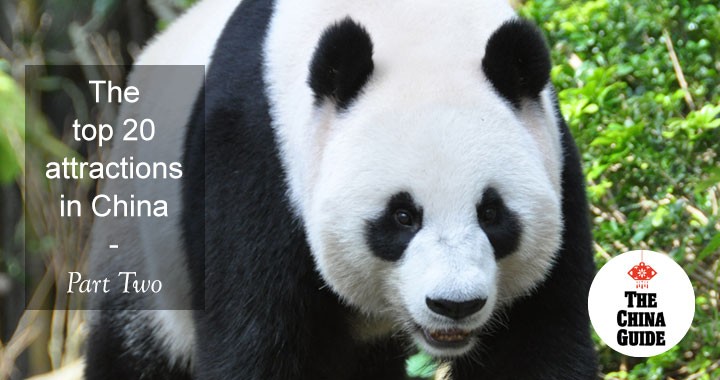
In our last blog we introduced the first 10 of what we consider to be the top attractions in China, the ones that deserve a place on every traveler’s itinerary. Here we count down the remaining 10.
The Classical Gardens of Suzhou
The Classical Gardens of Suzhou, located in Jiangsu province, were built over almost one thousand years, from the Northern Song to the late Qing dynasties. The Classical Gardens, built mostly by scholars, standardized the key features of classical Chinese garden design, which ultimately sought to strike a balance between man and nature. In traditional Chinese garden design, landscapes imitate the natural scenery of rocks, hills and rivers with strategically located pavilions and pagodas.
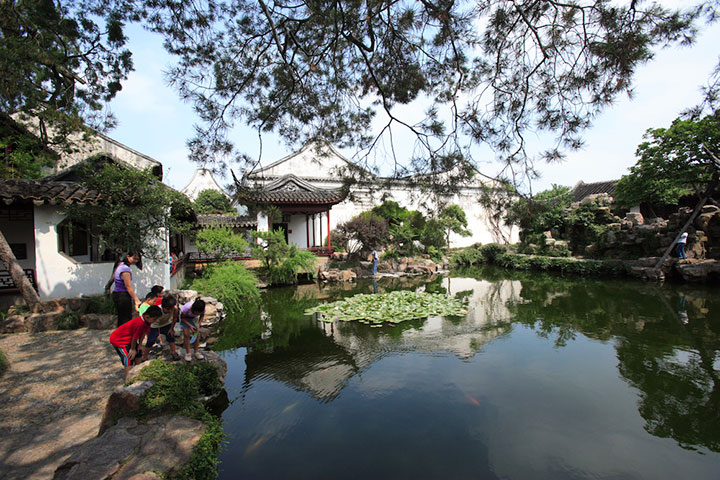
There are 69 preserved gardens in Suzhou designated as National Heritage Sites, of which some have also been inscribed on the UNESCO World Heritage List.
Temple of Heaven, Beijing
The Temple of Heaven complex was built between 1406 and 1420 during the reign of the Yongle emperor, who also ordered the construction of the Forbidden City. The Temple of Heaven occupies an area three times bigger than the Forbidden City, and is the largest existing complex of ancient sacrificial buildings in China.
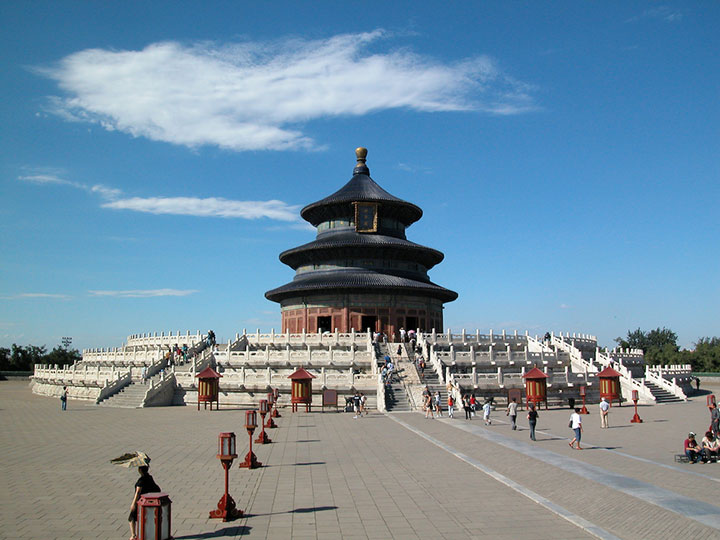
The temple was built for the ceremonies carried out by the Chinese emperor, who was, according to the ancient beliefs, the Son of Heaven. The emperor had to offer sacrifices to heaven in order to show respect to the source of his authority. The ceremony was of utmost importance to Chinese people, who believed that the smallest mistake could result in a bad next year for the entire nation, especially during the winter solstice.
It was made a UNESCO World Heritage site in 1998.
Summer Palace, Beijing
First built in 1750, the Summer Palace is the largest and best-preserved royal garden in China. It is one of the four most famous gardens in the country and one of the finest examples of Chinese garden architecture. Kunming Lake in the Summer Palace was created by extending an existing body of water to replicate Hangzhou’s famous West Lake.
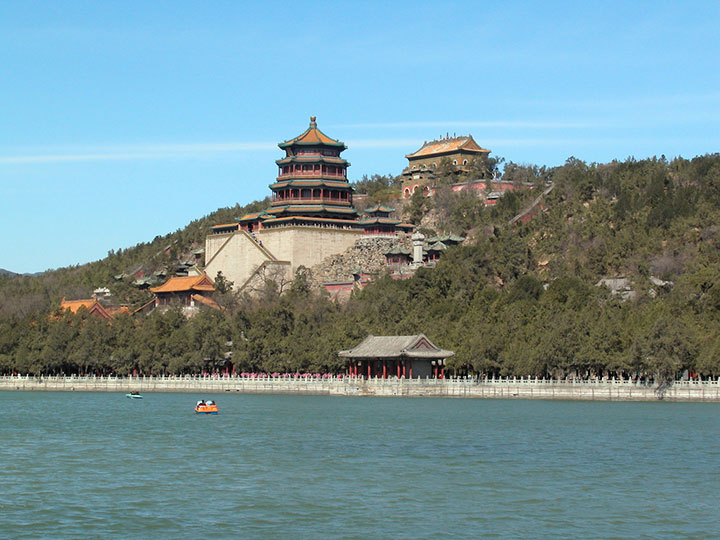
The Summer Palace has more than 100 examples of traditional architecture, including pavilions, terraces, temples, pagodas, covered corridors and the famous Marble Boat, a legacy of Empress Dowager Cixi, who diverted funds intended for the imperial navy. Some of the most famous spots of the Summer Palace include the Long Corridor along Kunming Lake and the 41-meter Tower of Buddhist Incense, which stands on the top of Longevity Hill, and is the garden’s highest point and main symbol.
Lama Temple, Beijing
The Yonghe Temple construction began in 1694 during the Qing dynasty, and was intended as the official residence for court eunuchs. It was subsequently converted into the residence of Emperor Kangxi’s fourth son, Yin Zhen.
In 1722 prince Yi Zhen ascended to the throne as the Yongzheng Emperor, and half of the residence became a lamasery, a monastery for Tibetan Buddhism monks, while the other half remained as an imperial palace.
Following Yongzheng death, Emperor Qianlong elevated the status of the temple to imperial by replacing its turquoise tiles with imperial yellow ones, and in 1744 it became a lamasery.
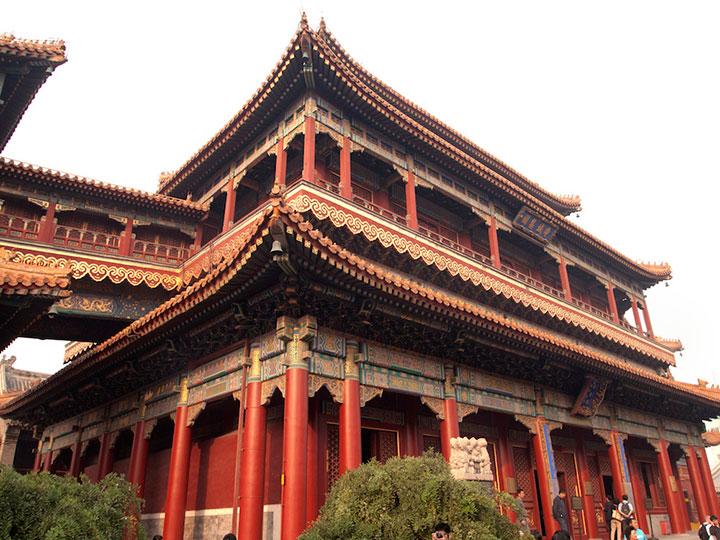
Unlike many other places in China, the Yonghe Temple survived history unscathed, until 1949 when it was declared a national monument and closed for the next 30 years.
The Yonghe Temple reopened again in 1981, and visitors can see the Temple’s most precious item, an 18-meter tall Tibetan-style statue of Maitreya, the future Buddha, which was gifted to Emperor Qianlong by the seventh Dalai Lama. It’s carved of a single piece of Tibetan white sandalwood, and took three years to arrive from Tibet to Beijing.
The Maitreya Buddha, as well as three bronze statues of the Buddhas of the Three Ages and the Five Hundred Arhat Hill, was included in the 1993 edition of the Guinness Book of Records.
Dazu Rock Carvings, Chongqing
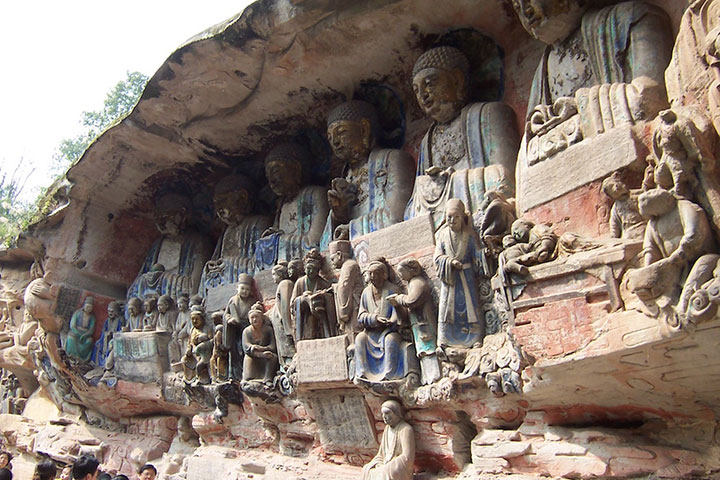
The Dazu Rock Carvings are located near the city of Chongqing and contain five clusters of rock carvings dating from the 9th to the 13th centuries. The Dazu Rock Carvings are well known for highlighting the peaceful coexistence between Buddhism, Taoism, and Confucianism. One of the best examples are the late 11th century carvings at Shizhuanshan, which depict a rare tripartite arrangement of these different religions.
Imperial Tombs of the Ming and Qing dynasties
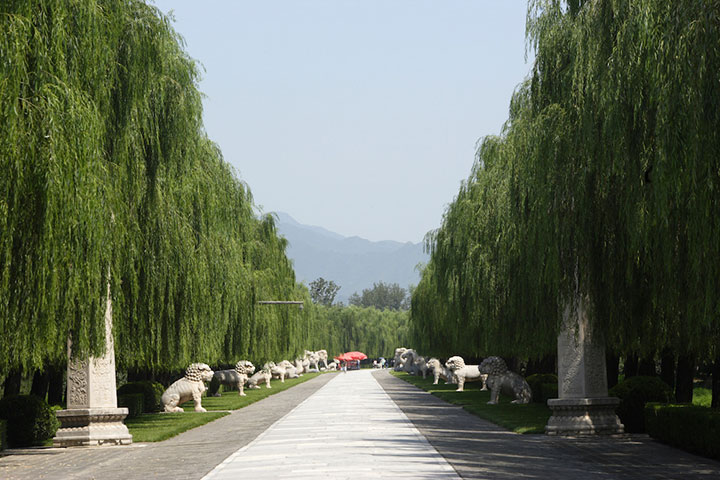
The Ming and Qing Imperial Tombs (1368-1911) combine the architectural arts of the Han and Manchu civilizations, and were built according to the principles of fengshui. The Xiaoling Tomb, the tomb of the first Ming Emperor, set the basic design for the subsequent tombs in Beijing, the Xialing Tomb of the Ming Dynasty in Zhongxiang, along with the Western Qing Tombs and Eastern Qing Tombs. The tombs are located in Beijing Municipality, Hebei province, Hubei province, Jiangsu province, and Liaoning province. They were built between 1368 and 1915 AD, and were included on the UNESCO World Heritage List in the early 2000s.
Cuandixia, Beijing
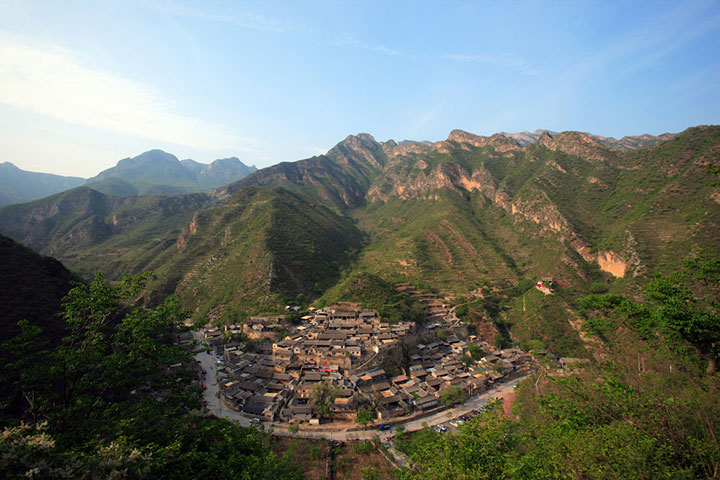
Nestled in the Jingxi mountain region, Cuandixia is around 90 kilometers away from bustling Beijing. The village is about 400 years old and is home to more than 70 well-preserved courtyards, with approximately 500 rooms, which were built during the Ming and Qing dynasties. Cuandixia was one of the last stops on the ancient Silk Road.
The Diaolou, Guangdong
The Diaolou are fortified multi-storeyed watchtowers, the first of which were built during the Ming dynasty and which became more popular during the 1920s and 1930s. Diaolou are normally made of reinforced concrete and are mostly found in Kaiping County, Guangdong province, in southern China. The diaolou are the result of a fusion between Chinese and Western structural and decorative forms.
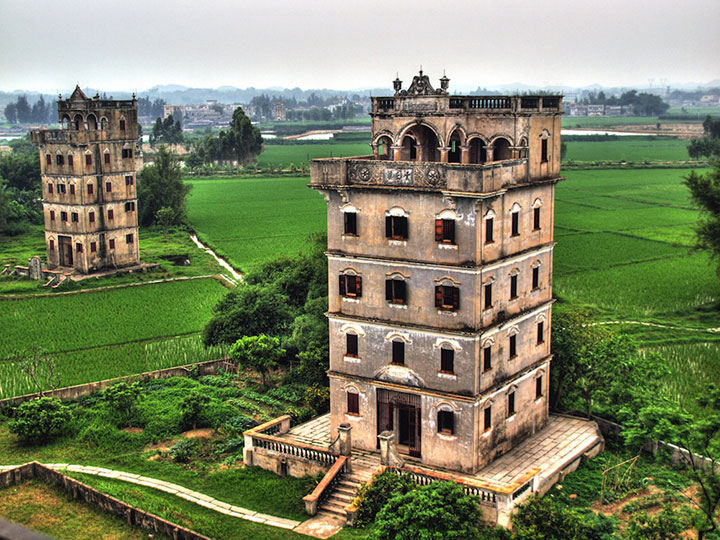
There are approximately 1,833 diaolou in Kaiping alone, while another 500 can be found in Taishan. They have been a UNESCO World Heritage site since 2007.
Chengdu Research Base of Giant Panda Breeding
The Chengdu Research Base of Giant Panda Breeding is a non-profit research and breeding facility for giant pandas and other rare animals. It is also known as the Chengdu Panda Base and is located in southern Sichuan province.
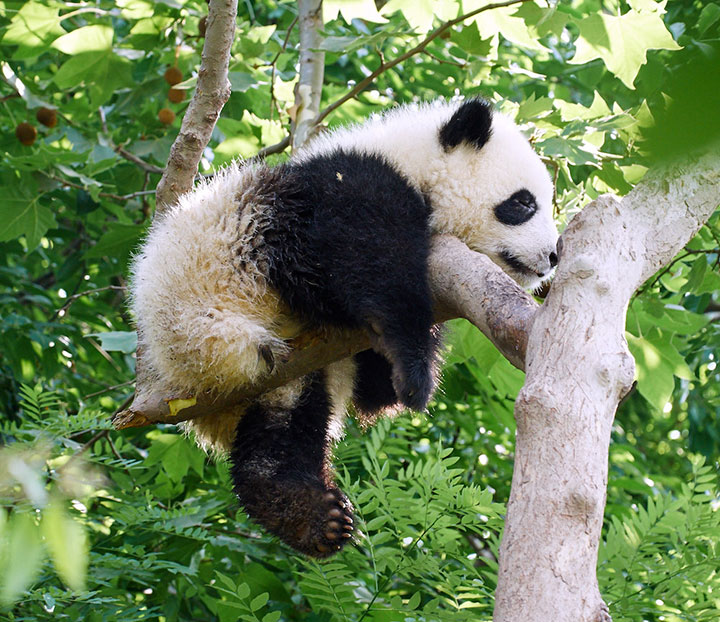
The Chengdu Panda Base has been committed to nature conservation and education, as well as panda breeding, since its establishment in 1987. The panda base has made many important achievements, such as the creation of the Department of Conservation Education, the first of its kind in China. In 2016 alone, 23 baby pandas were born at the Chengdu Panda Base, which features a 24-hour panda camera that allows anyone to take a peek at one of China’s treasures.
The Olympic Park, Beijing
The Olympic Park was constructed for the 2008 Summer Olympics and Summer Paralympics in Beijing. The Olympic Park boasts several impressive features, for example, the Olympic Village won a LEED gold certification from the USA Green Building Council, due to its unique combination of high-tech and low-tech solutions to reduce energy and raise efficiency. The roofs of the Olympic Village are covered in solar panels and vegetation, and toilets flush with greywater. The parking was built underground, which in turns allows for more green space.
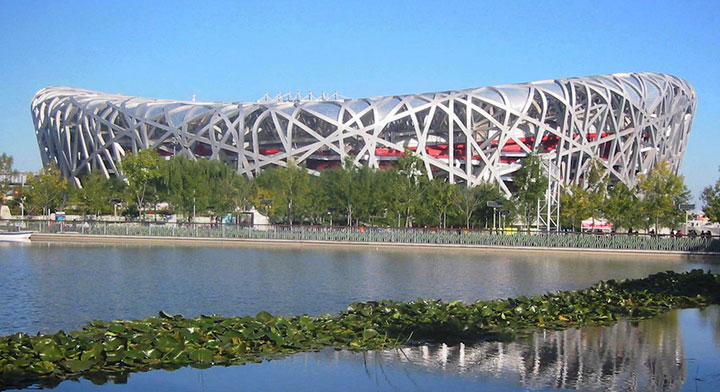
Two other buildings that are a must-see at the Olympic Park are the Beijing National Stadium, which is known as Bird’s Nest thanks to the shape created by the 26 kilometers of unwrapped steel used in its construction, and the Beijing National Aquatics Center, nicknamed the Water Cube, made of over 4,000 ETFE (Ethylene Tetrafluoroethylene) bubbles. It is better to visit the Water Cube at night, when it is illuminated with different colors. ■
Images: © Peter Danford, Wikimedia, Kevin Poh (Flickr)


